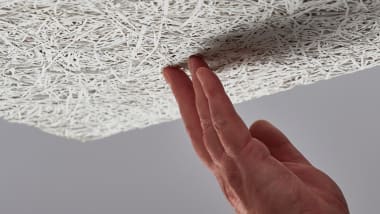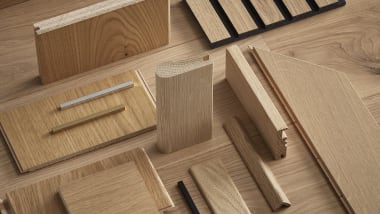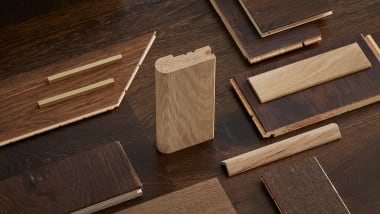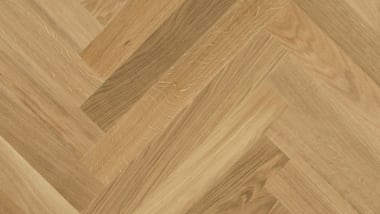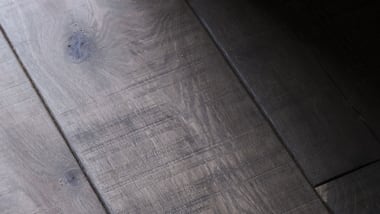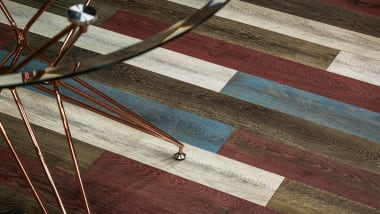How to make wood floors less slippery: 10 practical tips
12 Dec 2022
If you have wood floors in your home, it’s likely that you wanted comfort and aesthetic in your space. However, over time, you might have noticed that your wood floor is more slippery than when you first installed it.
Although this is common, there are ways you can fix this if you’re concerned that your beloved floors might now be a hazard in your home.
To learn why your wooden floor has become slippery, and how to make your flooring less slippery, keep reading to see what you can do about it.
Why are my wood floors suddenly slippery?
There are a few different causes of slippery wood floors. Factors that can make your floors slippery over time include:
• Dirt
• Debris
• Polish
• Wax coating
If your slippery floors happen all of a sudden, you might be dealing with:
• Cooking oil droplets on the floor
• Footwear that’s bringing in slippery substances
• Vinegar
• Mopping solutions
You might notice your floors are slippery after mopping. Although mopping is essential to keep your floors clean, you must make sure that your floor is completely dry, and not soapy, before walking on them. There are home remedies and off-the-shelf cleaners that can prevent slipperiness while letting your floors shine. You can also use a mop with a dusting agent to go over clean floors to reduce slipperiness. This can also help if your wood floors are sticky after cleaning them.
10 methods you can try to reduce slippery wood floors
1. Clean floors often
The easiest method to make your floors less slippery is to keep them clean. Dust and debris are common culprits, often causing your feet to slip on a wood surface. Debris can also fill in peaks in the wood that cause friction and lead you to slide.
Regular sweeping and mopping is a great solution to keep your floors clean. You should be mopping at least once a week to reduce the buildup of grime that causes slipperiness. Use a microfiber mop for wood floors to get the best clean. Vacuums also work wonders for cleaning your hardwood floors.
Deep cleaning solutions can remove stubborn stains, marks, scuffs, and deeply ingrained dirt. Deep clean your floors at least twice a year using a deep clean solution. Pro tip: Always clean up excess water and spills immediately to maintain the look and condition of your wood floors.
2. Use door mats
To reduce the chances of a slippery wooden floor, use door mats on both sides of your home's entrance. Door mats capture dirt before it enters your home, but also provide some grip on your floor, and reduce how often you need to clean them. Try to cover each door that you and your guests come in and out of regularly.
If you’re really particular about your floors, you could request your family to take their shoes off before stepping into the home. Or at the very least, make sure people are wiping down their shoes on the mat.
3. Use area rugs
Area rugs are a more modern design tool that can help you maintain wooden floors and keep them from becoming slippery. If you prefer rugs over mats, this is the perfect option for you!
Area rugs can be used at your home's entrance, or as a stylish addition around the home. For best results, add area rugs to parts of the home that see a lot of traffic.
Walkways and main living spaces with rugs provide an extra layer of grip to keep your feet on the floor. Like mats, area rugs prevent dirt from spreading around the home.
Some homeowners may not want to cover their wood floors with area rugs, but strategic placement and a matching pattern could change your mind.
To keep your rugs and mats in place, use non-slip pads. This quick and easy fix will reduce dirt while providing traction for your feet.
4. Remove wax residue
Wooden floors become slippery because wax and floor polish build up over time. You can remove the waxy layer with some ingredients you likely have at home.
You can purchase products on the market designed to remove wax residue from wood floors. In these cases, it’s recommended to use a certified wood cleaner to remove wax.
If you’re interested in something more DIY, you can use a mixture of one part vinegar to two parts water to mop the floor. Complete the process by going over the floors with a rinse of water. A word of caution: Always test these on a small inconspicuous patch of your home, as any damage could void the warranty on your wood floors
Don't use the vinegar method on wood floors that have:
• Oil-modified urethane
• UV-curing
• Film-forming finishes (varnish)
These finishes can degrade from the vinegar's acid.
5. Purchase an anti-slip treatment
Hardwood anti-slip treatments are popular products for homeowners with this flooring material. There are anti-slip treatment options for all types of wood. An anti-slip finish will create traction while making your wood floors shiny.
Most treatments require sanding before you apply them to wood floors, but there are some finishes with non-slip coatings you can apply immediately to your floors.
These coatings and wood sprays come in a variety of applications. An aerosol spray will produce foam that dries into a textured finish. Other coatings are typically water-based urethanes.
If you are a pet owner, you might benefit from an epoxy spray that provides a grip for your furry friends who constantly slip around your home.
6. Use non-skid paint
Non-skid paint is similar to wood floor coatings and sprays because it provides an additional layer of traction. Non-skid wood paint comes in various colours, unlike coatings.
If you walk barefoot in your home, this solution might be the best for you.
For those with an already favourite paint for their floors, you can find non-skid additives to include in that paint. Make sure the additive is safe for your type of wood, as some are created for boats, and not for use at home.
7. Use adhesive ‘peel and stick’ anti-slip tiles
‘Peel and stick’ adhesive anti-slip tiles are a simple and functional alternative to slippery floors.
These tiles are often made from vinyl or rubber, and can be purchased as-is, or custom-made to fit high-traffic areas in your home for easy, strategic placement.
Due to their nature, these tiles are easy to install and remove, and come in a variety of colours and patterns. Once placed, they’ll protect your floors and your feet thanks to their anti-slip material. They’re also perfect for keeping high-moisture areas, such as your kitchen or bathroom, safe from slipping.
8. Clean moisture residue
A wet floor is slippery, but you can't always prevent moisture residue. For example, after you mop, you should stay off wood floors until they dry.
Your bathroom and kitchen are more likely to be damp, so be sure to clean excess moisture up as soon as possible. To minimise the time the floor is wet, use a towel to dry the floor by hand. Use fans and open windows to speed up the evaporation process.
9. Choose an oil finish
It might sound counterintuitive, but you can make wood flooring less slippery with an oil finish. Compared to oil, wax finishes are notoriously slippery, especially when they get wet. Oil finishes penetrate the wood material deeply leading to a less slippery finish.
Unfortunately, you can’t apply oil over existing finishes, so this would require you to have your floor completely sanded and refinished.
If you choose to refinish your floor, select an oil over wax to reduce slipperiness. A natural oil kit has all of the tools and products needed to apply an oil finish.
10. Sand and refinish floors
It's normal for the finish on your floors to wear down over time, as regular traffic on wood can slowly wear away your panels. At the end of the day, if your wood floors are getting old, they just might not take to the above methods.
If this is the case, don’t fret! It’s just time to sand and refinish your wood floors. We recommend getting a professional to sand and refinish your wood floors about every 10-20 years. This will breathe new life into your floors, and extend their life for years to come.
Is your wood floor slippery?
Don't allow your floors to knock you off of your feet! If you follow our tips, you’ll be able to reduce the slipperiness of your floors, and keep your wood flooring looking fresh for years to come.
Need help with your floors? View our hardwood flooring products if you decide on a new finish, or purchase our dedicated cleaning products to protect your floors.



